












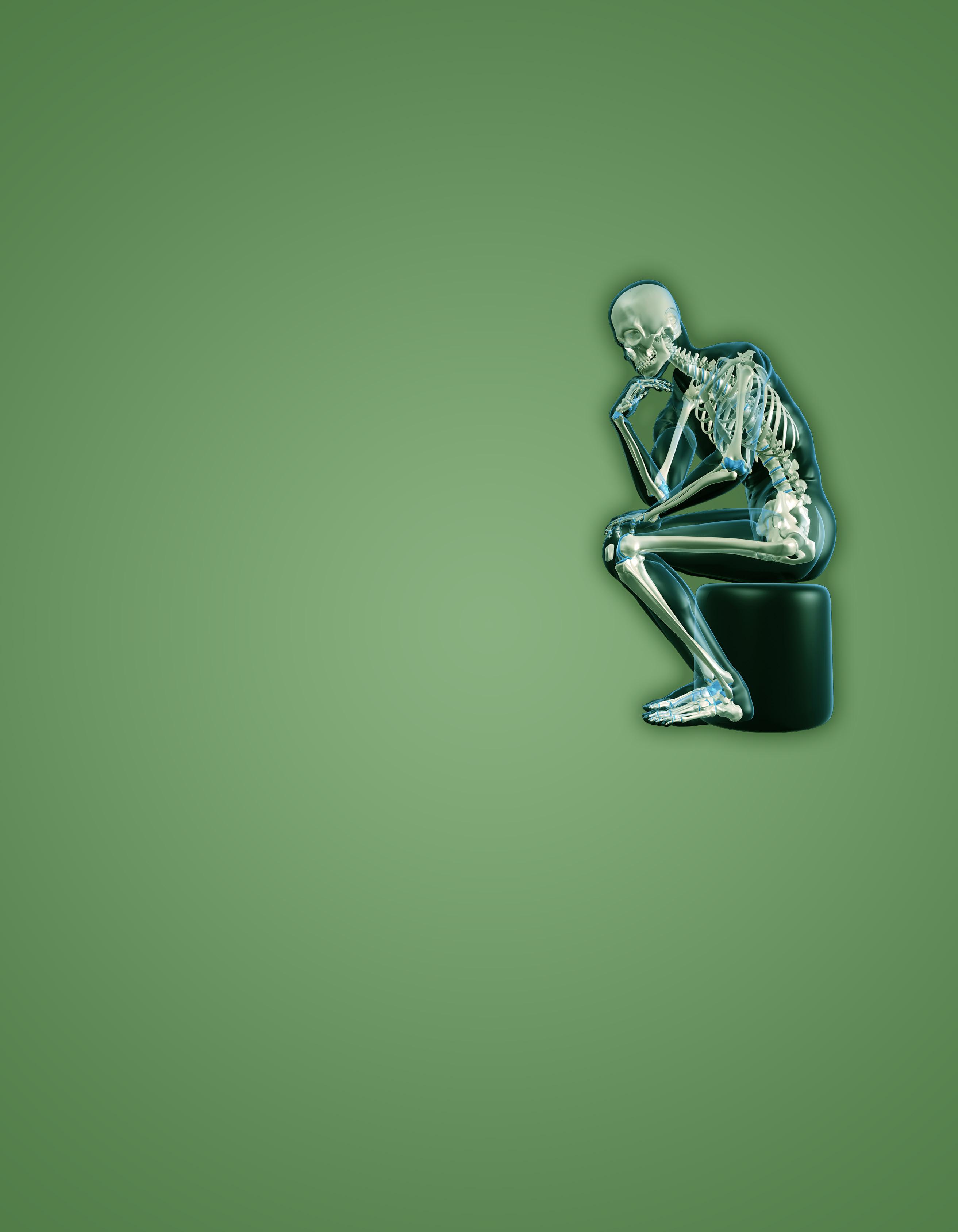

Nuclear Medicine Studies are the next level of advanced diagnostic care, providing incredibly detailed information that allows our Board Certified radiologists to achieve quicker, more accurate analyses of myriad conditions, including abnormalities of the bones and joints, brain, digestive tract, thyroid and more. For many conditions, it can be the quickest route from wondering to knowing.

For 25 years, we have been committed to creating an environment where our residents feel secure, cared for and loved. We would be honored to care for your loved ones in their time of need.
Services Offered:
In-House Psychiatrist
Podiatrist
Ophthalmologist
Dermatologist
Nurse Practitioner
Organized Social Activities
Church Services
Daily Living Assistance
We are currently accepting referrals
Assisted Living Facility
6333 SE Babb Rd. | Belleview, FL | 352-307-6333
prestigemanorassistedliving.com

 Carrol Dillon-Smith Administrator/Owner Megan Christine Forrest Director of Operations
Carrol Dillon-Smith Administrator/Owner Megan Christine Forrest Director of Operations
Just like fingerprints, no two knees are the same. You deserve a knee procedure customized just for you.
MAKOplasty® Partial Knee Resurfacing is the only truly patient-specific procedure, planned from a 3-D model of your knee and performed with proven, highly accurate robotic arm technology.

Compared with manual Oxford® procedures, MAKOplasty offers:
• Less post-op pain from Day 1 up to 8 weeks 1
• Increased knee functionality at 3 months post-op1
• 9 times lower failure rate at 2 years2 is available at Ocala Regional Medical Center.



Since everything in life can’t be planned, isn’t it good to know you can count on short ER wait times at Ocala Regional Medical Center and West Marion Community Hospital? Emergencies are our first priority and our wait times reflect that sense of urgency whether you have breaks or strains, stomach pains, pounding headaches or chest pain. Emergency trained physicians provide fast and friendly medical care close by so you can get back in the swing of activities you enjoy most.
Since everything in life can’t be planned, isn’t it good to know you can count on short ER wait times at Ocala Regional Medical Center and West Marion Community Hospital? Emergencies are our first priority and our wait times reflect that sense of urgency whether you have breaks or strains, stomach pains, pounding headaches or chest pain. Emergency trained physicians provide fast and friendly medical care close by so you can get back in the swing of activities you enjoy most.
ocalahealthsystem.com
ocalahealthsystem.com






Ocala Regional Medical Center
Ocala Regional Medical Center
West Marion Community Hospital
West Marion Community Hospital
Ocala Health has the shortest ER wait times in town. Text ER to 23000 for average ER wait times.
Ocala Health has the shortest ER wait times in town.
Text ER to 23000 for average ER wait times
COVER

› PAGE 32
ByFree From Fees › PAGE 22
The FreeD.O.M. Clinic comes back for a second year of complimentary health checkups. › By Brett
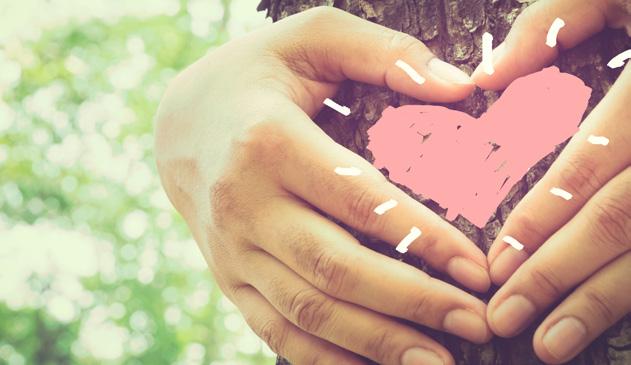
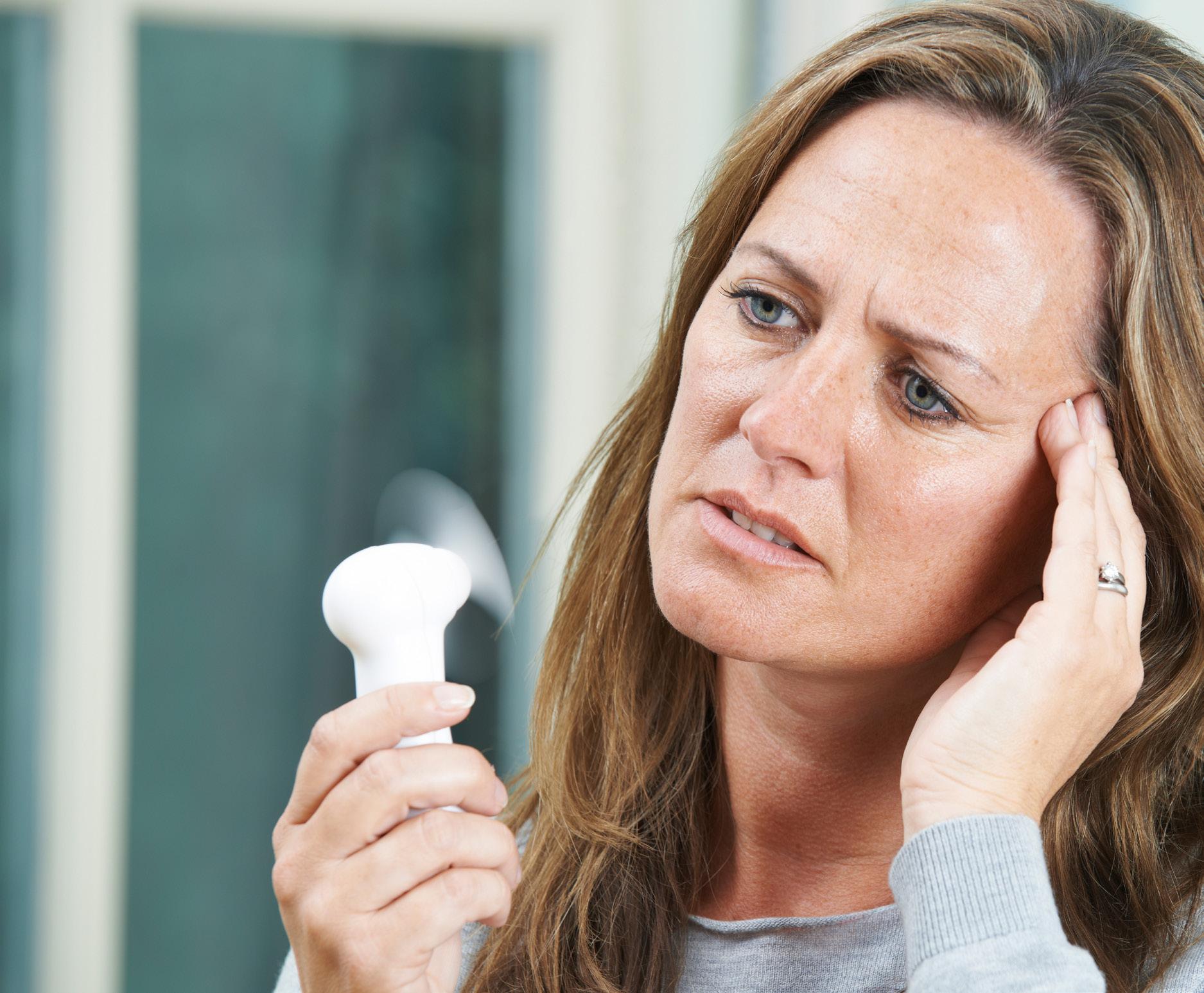 Ballantini
Ballantini
Cause of Death: Living › PAGE 26
While it hasn’t been researched in any highly funded medical studies, we could probably all agree that being born is the No. 1 cause of death for, like, everyone.
› By KatieHEALTHY beat
› PAGE 9
TRENDS | NEWS | PEOPLE
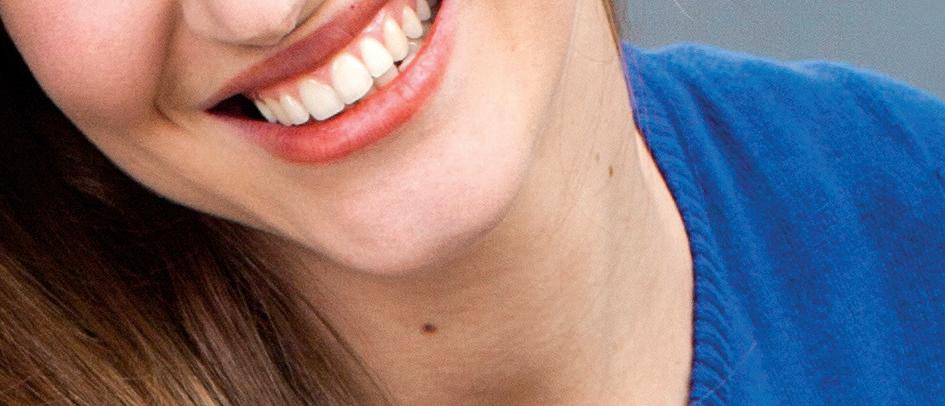 By Cealia Athanason, Grace Cali & Katie McPherson
By Cealia Athanason, Grace Cali & Katie McPherson
› 10 Yay for yoga.
› 12 When every minute counts.
› 14 A skin care solution?


HEALTHY dose
› PAGE 15
INSIGHT | ADVICE | SOLUTIONS
By Grace Cali, Laurel Gillum & Allyson Montoya› 16 Sick of being sick?
› 18 Fertility formalities.
› 19 Magnificent magnesium.
HEALTHY body
› PAGE 39
NUTRITION | FITNESS | BEAUTY
By Cealia Athanason, Grace Cali & Katie McPherson› 40 Make over your makeup.
› 42 Dinner done easy.
HEALTHY vibe
› PAGE 43
MIND | SPIRIT | FINANCE
By Grace Cali, Karin Fabry-Cushenbery Allyson Montoya› 44 Make it personal.
› 46 Get busy.
› 48 Reward yourself.
&
If you’re a woman and you live long enough, menopause is going to happen. Read on for some helpful information to guide you through the “Change of Life.” ›
Cynthia McFarland
McPherson



HEALTHY LIVING MAGAZINE has brought together a group of medical experts and community leaders to serve on our advisory board and share their expertise and insight with our readers.



Craig Ackerman Public Information O cer FLORIDA DEPARTMENT OF HEALTH IN MARION COUNTY
Ashley Barnes Patient Assessment Coordinator KINDRED HOSPITAL OCALA

CS Lewis has been recorded as saying “People with good intentions make promises, people with integrity keep them!”
We have several teams of “Promise Keepers” that are delighted to serve you and they understand that this is not a building they report to each day to work, but it is your home and they come to serve. Our staff of front line promise keepers; which is nursing, housekeeping, and maintenance, understands that attention to detail and follow through are critical components to how they perform their individual parts. There are a lot of moving parts that make Sunflower Springs an active, happy and safe place to live. And our team is dedicated to delivering what was promised.
Ashley Cauthen, M.D. Cosmetic And Clinical Dermatology MIDSTATE SKIN INSTITUTE
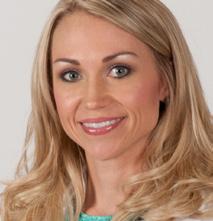
Derek Farr, D.O. Orthopedic Surgeon TWIN PALMS ORTHOPEDICS
Amy McLaughlin, APR, CPRC Director, Marketing & Communications
SEVEN RIVERS REGIONAL MEDICAL CENTER
Katie Myers, APR Director Of Marketing And Public Relations CITRUS MEMORIAL HEALTH SYSTEM
Navinderdeep Nijher, M.D. Plastic Surgery OCALA PLASTIC SURGERY

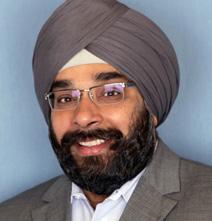


Chris Okonkwo, M.D. Pediatrics CHILDREN’S HEALTH OF OCALA
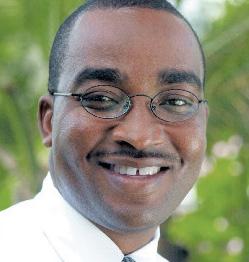
Joseph Foster Senior Solutions Director SUPERIOR RESIDENCES OF LECANTO





Carmen M. Hernandez Health Education Program Manager FLORIDA DEPARTMENT OF HEALTH
Amanda Ostrom Director of Marketing and Communications RADIOLOGY ASSOCIATES OF OCALA, P.A.
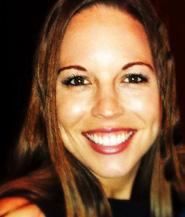



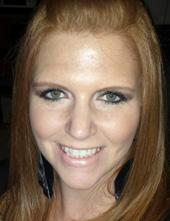

Jayanti Panchal, M.D. Internal Medicine And Medical Weight Management SUCCESS BY DESIGN
we are the areas choice
Come by and see why we are the area’s choice in outstanding service for an active lifestyle!
Michael Holloway, M.D. Physician-Directed Weight Management & Medical Aesthetics LIFESTYLE SOLUTIONS MEDSPA
Mark Jank, M.D. Ophthalmology OCALA EYE

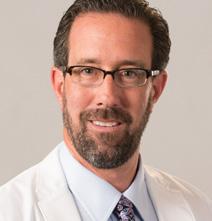

Carolyn Reyes, MPA, M.Ed. Community Liaison, Citrus & Hernando Counties COMFORT KEEPERS
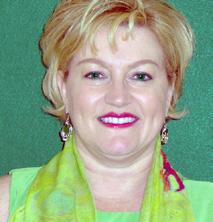



Suzanne Santangelo Director, Marketing OCALA HEALTH
Linda M. McKenna Director of Professional Relations
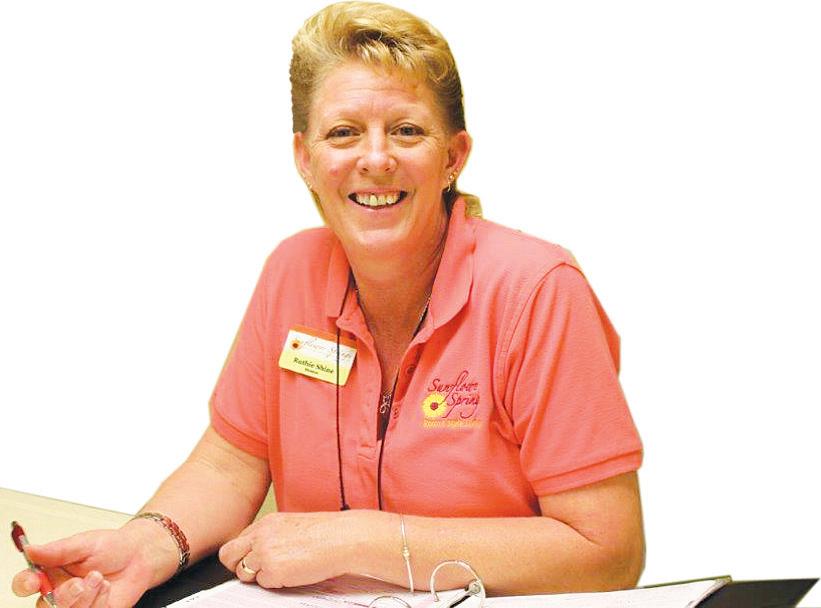
CHAPTERS HPH HOSPICE
Meghan Shay, CFRE Director Of Public Relations And Development THE CENTERS
PUBLISHER

Kathy Johnson kathy@healthylivingmagazines.com
OFFICE/PRODUCTION MANAGER Cynthia Brown art@healthylivingmagazines.com
EDITORIAL
EXECUTIVE EDITOR
Karin Fabry-Cushenbery karin@healthylivingmagazines.com
MANAGING EDITOR
Melissa Peterson melissa@healthylivingmagazines.com
ASSOCIATE EDITOR

Katie McPherson katie@ocalastyle.com
EDITORIAL ASSISTANT & SOCIAL MEDIA SPECIALIST


Cealia Athanason cealia@ocalastyle.com
CONTRIBUTING WRITERS
Brett Ballantini


Jim Gibson
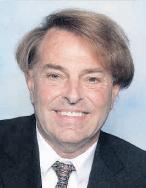
Laurel Gillum
Joann Guidry
Bonnie Kretchik
Cynthia McFarland
EDITORIAL INTERN
Grace Cali
Allyson Montoya
Molly Norman
ART art@healthylivingmagazines.com
CREATIVE DIRECTOR
Jason Fugate
ART DIRECTOR
Jessi Miller Castro
GRAPHIC DESIGNER

Christina Geiger
PHOTOGRAPHERS John SheilaJernigan fotolia.comHartley
SALES DIRECTOR OF SALES Dean Johnson deanjohnson@healthylivingmagazines.com


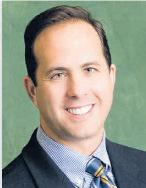

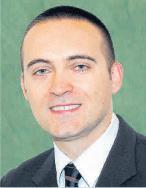

SALES MANAGER
Sharon Morgan
ACCOUNT EXECUTIVES
Anne Farrior anne@healthylivingmagazines.com
Lori Tani
Skip Linderman
Peggy Sue Munday
Liza Fritz
Tammy Walters
Dawn Anderson
DISTRIBUTION
Dave Adams
Debra McQueen
Rick Shaw O






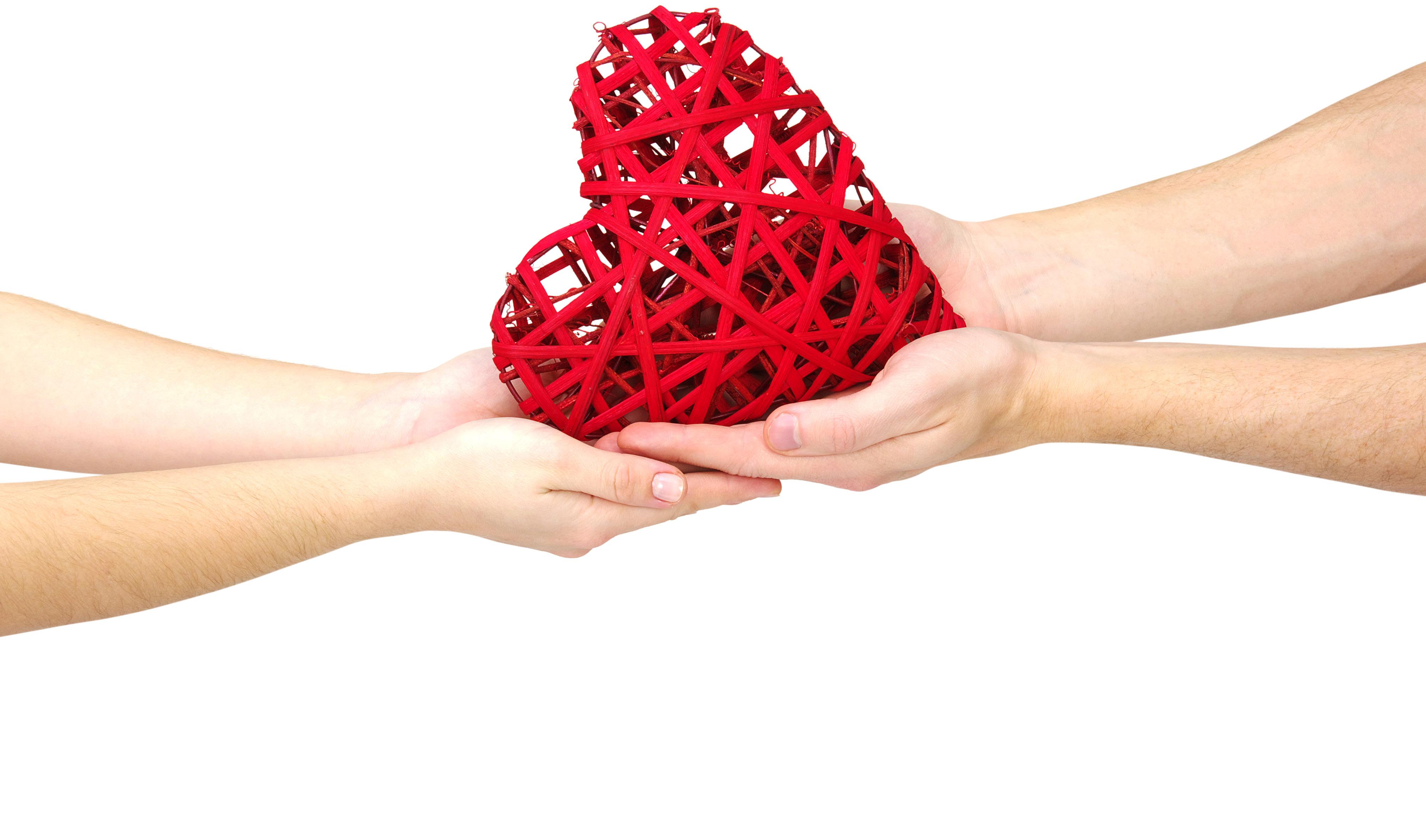
A new study, however, shows that we might have been doing it all wrong. During the study, researchers observed doctors and nurses to find the most e ective hand-washing technique. Although using the standard threestep, 20-second method does reduce bacteria by 6 percent, the new method works by reducing bacteria by 21 percent. Here are the steps to take for the best possible wash.

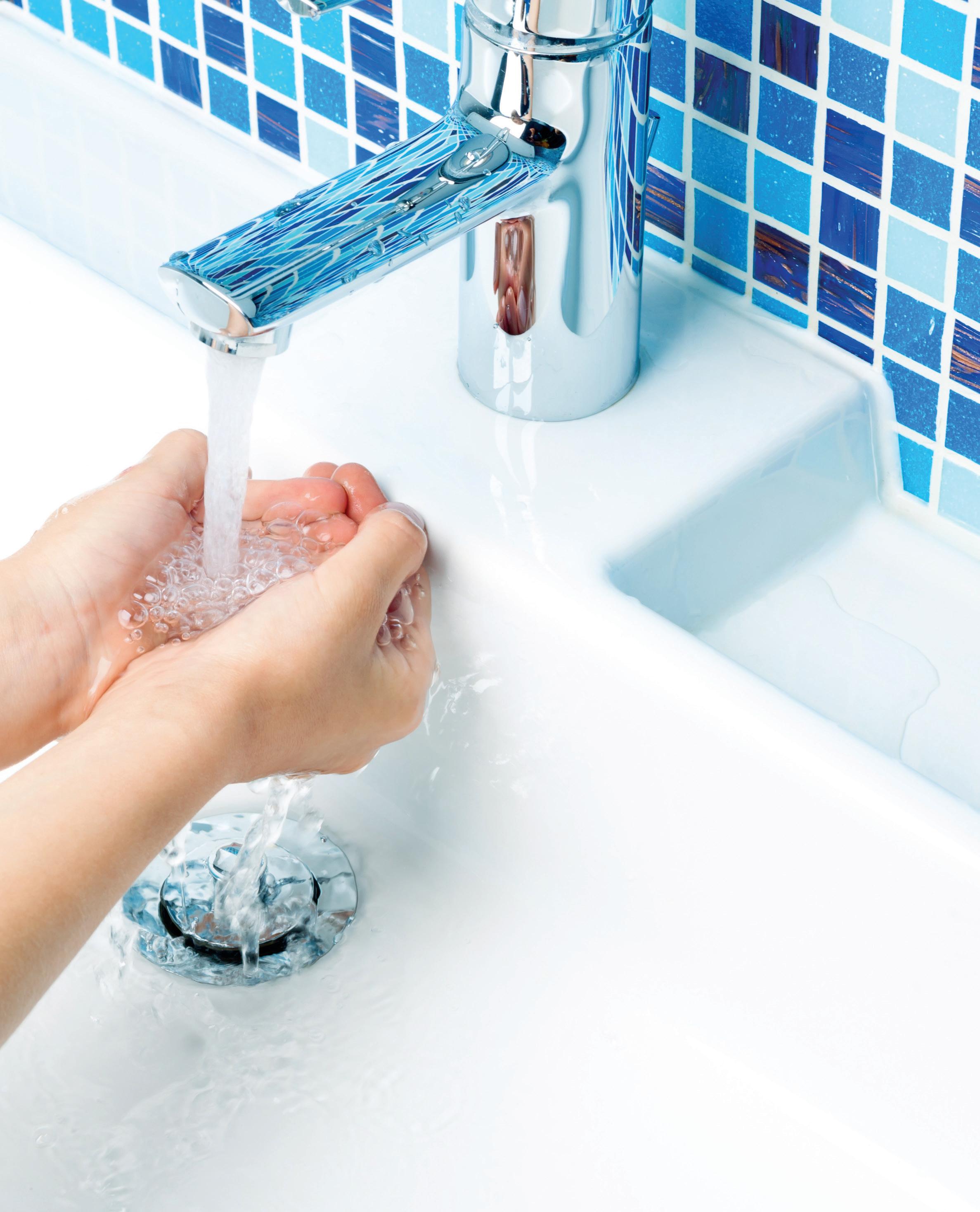
1. Apply a palmful of soap.
2. Rub hands palm to palm.
3. Rub right palm over left dorsum with interlaced fingers and then vice versa.
4. Rub palm to palm with fingers interlaced.
5. Rub backs of fingers to opposing palms with fingers interlocked.
6. Rub rotationally with left thumb clasped in right palm and then vice versa.
7. Rub rotationally backward and forward with clasped fingers of right hand in left palm and then vice versa.
8. Dry hands. The whole procedure should take 20-30 seconds.
Since we were children, we have been taught to always wash your
organize a fundraiser walk for The Legacy House Hospice each year and volunteer at other charitable events around town. Ingrid also does outreach by writing letters so her recipients can get something sweet in the mail between all the bills. These yogis are nothing if not compassionate.
“There is not a day that goes by that we don’t get up, have our tea and do our yoga practice and breathing no matter where we are in the world,” Ingrid explains. “It’s what we love, and we want to share it. We’re always studying. When we go to the ashram, we’re teaching, but we’re also learning, and when we have the opportunity to take a course, we do. The whole lifestyle is a beautiful way to live.”
Andrew and Ingrid believe in the benefits of yoga, for both mind and body. At 76 and 68, they’re perfect examples of its preventative powers.


“Yoga is the science of health and prevention. Medicine is the science of disease. Once you’re sick, you go to the doctor. Taking care of your health is eating the proper foods, doing the proper exercise and thinking in an upbeat, positive way,” Andrew says.
Yogi Andrew and Ingrid Crane live in the quiet Oak Run neighborhood in Ocala. They love the peaceful area; it’s the perfect backdrop for their life’s passion: yoga. Thanks to their early career success in Manhattan—Andrew was a stockbroker for Merrill Lynch, Ingrid was a salesperson for W Magazine—they’re now able to provide the invaluable benefits of yoga to the community for free.
The Cranes have a studio in their home where they teach yoga, Thai massage and reiki healing at low rates, just $30 to $50. On the first Saturday of each month January through April, you’ll find this couple teaching chair yoga at Freedom Library. Also on the first Saturday of each month, from May through October, they’re in Sholom Park offering free morning yoga to anyone who shows up. They provide multiple free classes weekly for their fellow Oak Run residents,
Ingrid“The Western paradigm of medicine is to fix what’s broken, as with surgery. Yoga is about preventing disease in the first place,” Ingrid says. “When we teach, it’s like a workshop. The breathing we do allows you to take in seven times more oxygen than a shallow breath. I want them to know they’re nourishing their adrenal glands and lowering their cortisol.”
For those considering trying one of the Cranes’ free sessions, there’s nothing to it but to do it.
“I don’t care if you come, sit and don’t do anything. Just come! Don’t be intimidated,” Andrew says.
For more information on classes and free yoga meetups, call (352) 854-7950.
If you ask Yogi Andrew Crane and Ingrid Crane how they’re doing today, they’ll say “happy.” Why? According to Andrew, “if you’re not happy, you’re crappy.”
› Story and Photos
The western paradigm of medicine is to fix what’s broken, as with surgery. Yoga is about preventing disease in the first place.
›
Crane













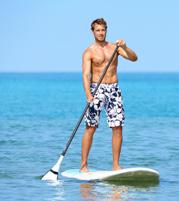
Jamie Caron, RN, CSN, CEN, director of emergency services at Citrus Memorial, explains that tPA is a clot-busting drug best administered within the first hour of arrival to the ER and up to three hours after symptoms begin. With the TeleNeurology service, patients are assessed by a neurologist immediately and treated within minutes.
“It (the TeleNeurology service) is saving at least 30 to 45 minutes to get a neurologist,” Caron says. “It gets the doctor there right now.”
Emergency medical services gets the ball rolling initially. They call in stroke patients as a stroke code to Citrus Memorial, and then the hospital calls the neurologist. Before the patient even arrives, the neurologist is waiting on the screen to perform a quick diagnostic exam.
“The only way to do that is with the assistance of the nurse and ER physician. It’s kind of like Skype,” Caron says.
› By Cealia Athanason
Citrus Memorial Hospital doesn’t mess around. Thanks to the new TeleNeurology service they introduced in January, the hospital can now treat stroke patients without a neurologist on the grounds. This new service streams an on-call neurologist live onto a television screen that’s set up on a rolling cart. (And yes, they call it Sheldon, for all you Big Bang Theory fans out there.)
Citrus County has a high stroke death rate, and, though this is mostly due to the large population of elderly folks there, Citrus Memorial works to spread awareness for stroke signs and symptoms. The hospital uses talks, guest posts on their website and the acronym FAST—facial drooping, arm drift, speech changes and time—to get the word out to the community. The faster a stroke patient gets treated, the better their recovery will be.
“I think that a lot of education needs to happen in Citrus County,” says Katie Myers, director of marketing and public relations at Citrus Memorial. “We actually have a stroke committee.”
The nurse draws blood and sends it off to be tested, while the patient gets a CT scan and is then transferred to a bed with a built-in scale for taking the patient’s weight.
Within about 15 minutes, blood results are back and tPA can be administered, if needed.
Once the tPA is administered, Caron says they start seeing positive changes as soon as 30 minutes later. Not only is this practice beating the national goal in treatment time, it’s saving lives. Bazinga!
It (the TeleNeurology service) is saving at least 30 to 45 minutes to get a neurologist. It gets the doctor there right now.
› Jamie Caron














In Korea, skin care is introduced at an early age. And it should be—prevention is key to maintaining dewy, airbrushed-looking skin. But it’ll take you about 40 minutes a day. Using cleansing, moisture and applying all the right ingredients to combat redness, blemishes and fine lines, Korean skin care is taking the world by storm (and supposedly we’ll be all the prettier for it).

This routine should technically maybe probably be done using Korean brands and products. I purchased the essence and the ampoule (reportedly the two products in the Korean regimen that make the biggest difference) and subbed in my own moisturizers, cleansers, etc. (Your girl loves her skin but not as much as her bank account.) Here’s what went down, twice daily, for seven days:
1. Oil cleanser.
2. Cream or foaming cleanser.
3. Natural exfoliator, like a sugar or co ee scrub, once a week.
4. Toner/refresher. Use an alcohol-free formula.
5. Facial essence. Supposedly this is the key to the whole system, but it’s basically a spray-able ampoule, so to me it felt redundant. We’ll see.
6. Ampoule. This is like the nutrient-dense cousin of the serums we see stateside. I couldn’t read the description (hi, Korean alphabet), so I accidentally bought one made of 80 percent snail secretion filtrate. But you never see a snail without a youthful glow, so…
7. Sheet mask, only once a week.
8. Eye cream.
9. Moisturizer. You should feel like a layer cake at this point.
10. Night cream before bed, BB cream with SPF for day time.
**I recommend a quick Google search for more detailed instructions and product recommendations.
DAY 1-2: My face is visibly brighter already, but I’m tired of this 10-step business, especially before bed. It’s almost a part-time job.

I’d give the Korean skincare routine a 7/10. Most mornings I don’t want to get up any earlier to cleanse three times and moisturize another five to seven, but my pores are less visible and I’ve noticed less redness. My skin rarely felt oily all week, probably because it had more than enough moisture to work with (hi, snail juice). I’d recommend this if only to spend a little time on yourself each day and wind down. Your skin may become brighter and smoother as a result, and it’s hard to complain about results like that. You’re sure to find at least one product your skin has been missing!
DAY 3: I woke up with tons of little whiteheads, so I guess it gets worse before it gets better. I spent this day angry at snails, but my dedication did not waver.
DAY 4: I’m way over spending 20 minutes on my face before bed and feeling like a gooey layer cake, but that said, it’s nice to have a routine before bed that’s all about pampering myself. Still, my skin had better be smooth as a snail’s butt when this is over.
DAYS 5-7: Forty minutes a day on my skin is becoming the norm, and it feels like less of a hassle. But is it worth it?


This tumor, formerly called EFVPTC but now known as NIFTP, makes up about 10 to 20 percent of all thyroid cancer diagnoses in North America and Europe. It is reported that around 10,000 people in the United States are diagnosed with this thyroid cancer each year. With this new discovery, people who had been previously diagnosed with cancer are free from the now unnecessary treatments, such as thyroid removal and radioactive iodine treatments. Cancer diagnosis is terrifying for a patient to hear, and now, those who have this type of thyroid tumor won’t have to deal with that stigma.
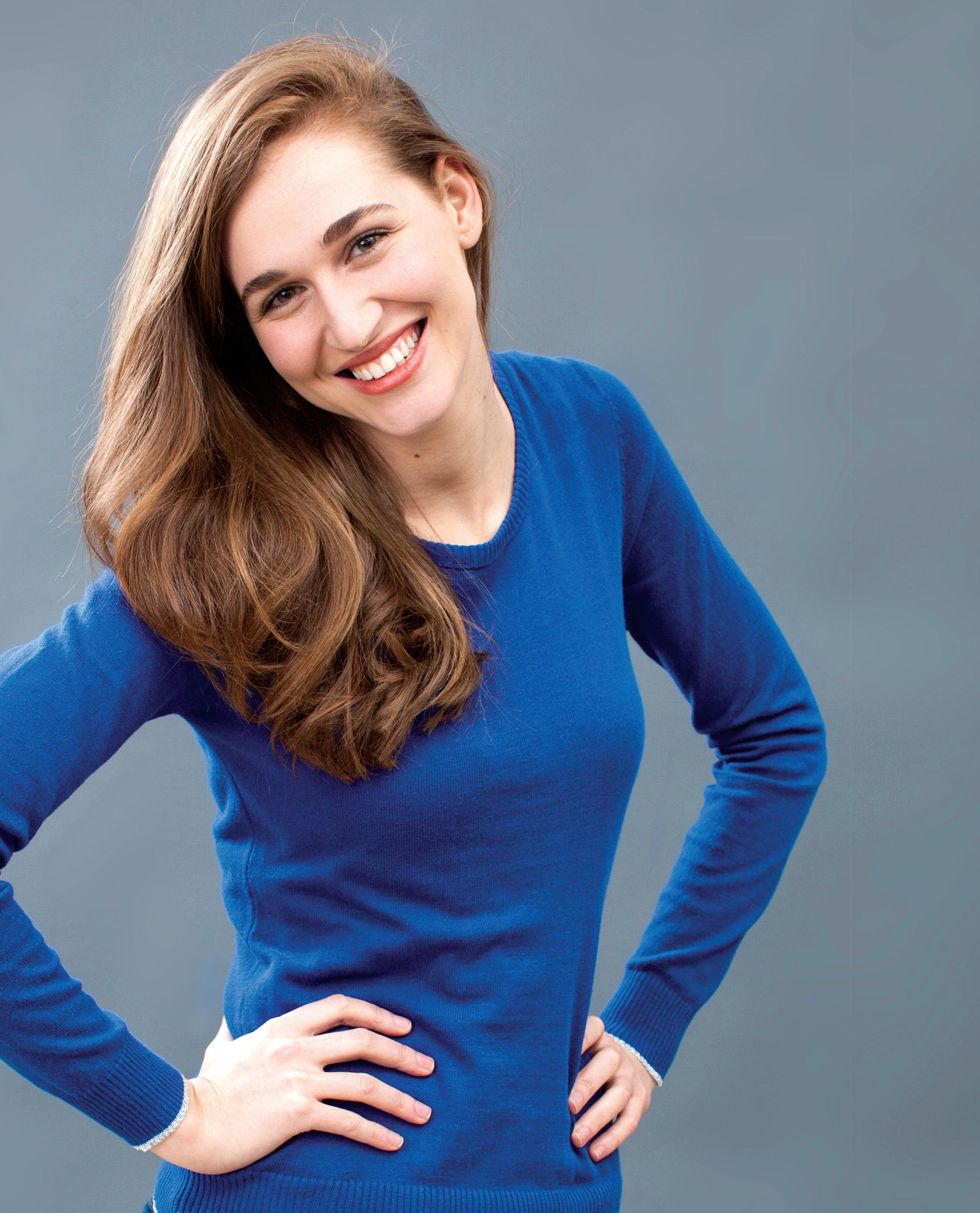
Recently, a group of doctors from seven countries reclassified common thyroid cancer as no longer cancerous.
The solution may be easier than you think. Here are some great tips for keeping germs at bay and you at your best.
Want to get those hands even cleaner?
SCRUB, SCRUB, SCRUB. You tell your kids relentlessly to wash their hands, but how often are you? Seems like a no-brainer, but it’s easy to forget when you’re on the move. We constantly touch objects around us and then touch our faces, giving germs easy access to the rest of our bodies. Stop that! Regularly wash your hands to protect yourself from viruses and lower your risk of getting sick. Plus, dirty hands are just gross.
Follow our tips on page 9
CATCH SOME ZZZ s . While sleeping, our immune system creates cytokines and antibodies that ward off infections. These crimefighting cells protect our body from foreign invaders, such as bacteria and viruses. According to a sleep study done by the Mayo Clinic, lack of sleep not only lowers the production of these cells, it may actually contribute to how long it takes for your body to recover from illnesses. The average adult requires seven to nine hours of sleep, so put down the iPad and get into bed.
SAY SO LONG TO STRESS. Whoever coined the phrase “laughter is the best medicine” knew what they were talking about. Several health studies suggest that increased levels of cortisol, the stress hormone, weaken your body’s ability to fight off infections, such as influenza or even the common cold. If pressure from work or home is getting the best of you, make sure to take time to focus on reducing stress. Spending just 30 minutes a day on yourself can make a difference. Go for a walk, call a friend or even read your favorite issue of Healthy Living. The choice is yours!
DON’T BE DEFICIENT. Did you know that soaking up some sun can increase your overall health? Vitamin D deficiency prevents cells in your body from fighting off foreign invaders, aka germs. Fortunately, spending time in the Florida sunlight may keep you both happy and healthy! Experts suggest getting 10-30 minutes of direct sun exposure each day, depending on your skin pigment. If you’re planning to be out longer than that, don’t forget the sunscreen! For those of us with hectic schedules and little to no free time, try adding fatty fish or dairy products to your diet, which are packed with vitamin D.
GO FOR SOME GARLIC. Aside from its reputation for warding off vampires (#bonus), this common household ingredient is an incredible immunity booster and has been known to reduce blood pressure and cholesterol levels. In order to receive the most benefits from garlic, trying sprinkling it over your food raw rather than cooking it, as heat deactivates its core benefits to your body.

GINGER, PLEASE. This root contains dozens of beneficial antivirals, including a chemical called sesquiterpenes, which is responsible for fighting the common cold. Just boil a ginger root in some water, add some lemon and honey for extra antioxidants (and a flavor boost) and voilà! Or, if you choose, ginger comes in capsule form, as well.

Our wellness evaluations show the exact point you decided to take control of your health. Find out your total and visceral body fat, bone density and metabolic age. We can design an easy program for you to follow to obtain your weight and fitness goals. Weight management gets you the proper nutrients into your body instead of empty calories. Call or come by today and receive a no-cost evaluation. Christina is glad she did, and you will be, too!







Trying to make a baby? Well, even though the typical male body produces 12 million sperm a day, in a recent Harris Poll, two out of three men admitted that they don’t do much, if anything, to support healthy male fertility. That needs to change. A growing stack of research shows that there’s plenty guys can do to ensure that their swimmers are plentiful, fast and equipped to get the job done. Now, you may need a fertility doc’s help if you and your partner have been trying to get pregnant without success for more than a few months, but for most, these everyday strategies can help.
SLATHER ON A MINERAL-BASED SUNSCREEN. Sun-protection products that use micronized zinc oxide or titanium dioxide to filter out the sun’s damaging ultraviolet rays are our first choice. That’s because sunscreens containing avobenzone, homosalate, meradimate, octisalate (also known as octyl salicylate), octinoxate (or octyl methoxycinnamate), octocrylene, oxybenzone (also called benzophenone-3 or BP-3) and padimate O may impair sperm’s ability to fertilize a human egg.
CUT BACK ON CAFFEINE. A new study looking at miscarriage and health habits of women and men found that women drinking more than two caffeinated drinks a day in the weeks and months before trying to conceive could raise their odds for miscarriage. Coffee, tea, soda and other drinks with caffeine had an effect when either partner overdid it. For men, caffeine may reduce sperm count.
UP THE VITES. Protect yourself by taking a daily multivitamin for several months before you try to conceive.
Zinc (about 12mg a day) and vitamin D-3 (up to 1,000mg a day) keep sperm fast and healthy, too.
RELAX! According to a recent Rutgers University study, feeling stressed out could reduce sperm concentration and leave more sperm deformed or unable to complete their great race to the egg.
WEAR BOXERS DURING THE DAY; SLEEP NAKED AT NIGHT. For optimal sperm quality and quantity, your sperm-production factory needs temperatures cooler than the rest of your body. Tight underwear can damage sperm and reduce sperm count by up to 50 percent.

UNPLUG YOUR CELL PHONE BEFORE YOU ANSWER IT. Guys who talked on their mobile phone while it was charging were four times more likely to have reduced sperm concentrations than those who unplugged their phones first, says a recent Israeli study. Carrying your phone near your groin could cause trouble, too, so stick it in your suit or sports jacket pocket.
SKIP THE DRINKS AND SMOKES. Tobacco use can slash sperm count. And having more than one drink per day could mess with the shape of sperm, a sign they may be damaged or unable to move quickly.
WORK OUT WHILE YOU WATCH TV. Guys viewing more than 20 hours of TV per week had sperm counts 50 percent lower than those who rarely watched, research shows. In contrast, getting plenty of vigorous exercise could increase sperm counts by as much as 73 percent.
EAT MORE OF THIS, LESS OF THAT. Fruit and veggies support the development of high-quality sperm; so does getting plenty of omega-3 fatty acids from sources like salmon, wild trout, sardines or anchovies. Saturated fat, found in meats, dairy, processed snacks and desserts, can slash sperm counts by 38 percent.
We did, however, find an excuse to pack your diet full of nuts, seeds and leafy greens. Sorry, we tried!*
Magnesium is a must-have—at least according to our dietary needs, that is. The human body consists of approximately 20-28 milligrams of magnesium, with 50 percent alone going straight to the skeletal system. The rest is stored in muscle, soft tissue and other bodily fluids. A magnesium deficiency could cause a buildup of problems, including insulin resistance and coronary heart disease.
Looks like those things your mother told you at the dinner table were somewhat plausible. After all, she was right: Drinking milk (which, you guessed it, is high in magnesium) does give you strong bones. One of the major pros in magnesium consumption is the role it plays in the assimilation of calcium into bone and the activation of vitamin D in the kidneys. Magnesium intake has not only been associated with greater bone density, it has
been proven to lower the risk of osteoporosis in postmenopausal women. Ditch the straws—a milk mustache sounds really good right about now.
Your heart beats for magnesium. Helpful in its endeavors to maintain a steady heartbeat and normal blood pressure, magnesium is a must-have supplement for a happy heart.
Magnesium is not limited to a healthy heart and strong bones, however. Magnesium is also found in 300 different enzymes in your body, including some that help regulate blood sugar. Many people with insulin resistance also experience high levels of magnesium output in their urine, explaining the body’s lack thereof. If you want to avoid type 2 diabetes, magnesium may be crucial. Ask your doctor.
How about those green veggies now? If you’re still crinkling your nose, try these magnesium-rich
All milk products contain magnesium. Last time we checked, this put ice cream on the qualifying list—in moderation, of course.

BANANAS. Potassium and magnesium? That’s a two-for-one if we ever saw one.
DARK CHOCOLATE. See, we told you we were trying! Paired with fresh fruit, we would say this makes for a pretty awesome dessert.
AVOCADO. One sliced avocado coming right up. You will easily consume 15 percent of your daily recommended serving of magnesium in one sitting— or on one sandwich, whichever you choose.
FISH. Make it a goal to serve this protein once a week. Salmon salad? We think yes.

Although we rack our brains trying to find any health benefits associated with a bag of chips, the facts keep coming back to haunt us.












Hundreds of local children have suffered in ways that adults can hardly comprehend. While their friends and classmates are learning, growing, and enjoying their childhoods, these children have suffered trauma, abuse and neglect. They need guidance, they need love, they need family and, above all, they need safe, caring foster or adoptive homes.
The most urgent need in our community is for compassionate individuals to become foster or adoptive parents for children and youth ages 9 to 15.


For children of all backgrounds, these critical years are the bedrock upon which their adult lives will be built. The behaviors, attitudes and choices of this period echo throughout an individual’s life. But for children in the child welfare system, these years are especially momentous. A loving foster or adoptive parent—someone like you—can help a child build a strong foundation for a happy, successful life. As one local foster parent put it, “We have a window of opportunity to have a positive impact on these children.”
Many foster and adoptive parents choose to open their homes to children ages 9 to 15 because there is a real opportunity to make a difference for a lifetime in a relatively short amount of time. A loving home during this vital time can


mean the difference between a child continuing the cycle of abuse, neglect and poverty or transcending it. Whether providing a caring refuge as a foster parent or giving a child who has suffered a forever family through adoption, you can make a difference for generations to come.
Fostering or adopting a child in need is both challenging and rewarding. Most foster and adoptive parents in Central Florida say they are living out a conviction to care for these children. This calling stems from their most deeply held values, life experiences and spiritual beliefs. And it enables everyday people to become true heroes for local children and youth.
Please ask yourself if you are called to provide a home for a child in need and become their foundation for a better life. You don’t have to be wealthy or perfect to foster or adopt. You just have to open your heart and home.
To learn more about becoming a foster or adoptive parent, please call Paula Mealy of Kids Central, Inc. at (352) 387-3487 or visit KidsCentralFosterParents.org for more information. Kids Central, Inc. is the nonprofit lead agency charged with caring for abused, neglected and abandoned children in Citrus, Hernando, Lake, Marion and Sumter Counties.
THE FREED.O.M. CLINIC COMES BACK FOR A SECOND YEAR OF COMPLIMENTARY HEALTH CHECKUPS.


 BY Brett Ballantini
PHOTOS BY John Jernigan
BY Brett Ballantini
PHOTOS BY John Jernigan
While millions have taken advantage of the Affordable Care Act to procure health insurance, Florida’s decision not to expand Medicare leaves nearly half a million residents in a “coverage gap.” And that gap can find poorer families skipping basic medical, dental and vision care exclusively due to costs.
But there is hope, and it’s coming to Ocala at the end of July. Those who find themselves unable to afford basic care can get those needs met at the FreeD.O.M. Clinic at the Southeastern Livestock Pavilion on July 28 and 29.


The FreeD.O.M. Clinic is the brainchild of the husband-and-wife team of Ann Burnett and Dr. Don Bovell. Although FreeD.O.M. is in just its second year providing free health care in Ocala, its parent organization, United Hands, has offered free health care worldwide since 1995.
For the FreeD.O.M. Clinic’s 2015 Ocala debut, more than 800 medical and general volunteers provided more than a million dollars of care to the community and served more than 3,000 patients over five days.

“It’s just wonderful to see everybody come together when there’s a need and help those in need,” Ocala Mayor Kent Guinn said at last year’s clinic. Patients came away pleased, at times even being reduced to tears by the kindness and care they were shown.
“They’re doing a great job here. They’re giving back to the community,” patient Velma Dilwort told Gainesville.com. “I’m very grateful.”
This year, the FreeD.O.M. Clinic runs for just two days but will have visits scheduled at the Southeastern Livestock Pavilion for the first time, keeping all exams completely indoors and air-conditioned.
“There are so many people who need medical care, dental care, eye care, that we simply have to do our very best to meet their needs and make up for the deficiencies in the health care system,” Burnett says.

This year, twin brother dentists Jamie and Simon Amir are volunteering as co-directors of the FreeD.O.M. Clinic. They have proven invaluable both as health care professionals and recruiters.
“It’s an extremely rewarding experience to have a part in what Dr. Bovell and Ann Burnett have brought to our local community,” Dr. Jamie Amir says. “It is a huge undertaking for them, and they are such inspiring and selfless people. I’m personally honored to be able to contribute to their project in any way I can.”
Dr. Simon Amir agrees.
“I have never met two people so utterly dedicated to helping their fellow man,” he says.
Burnett and Bovell laid the groundwork, and doctors like the Amirs are carrying the torch with their own leadership. But the core of the clinic is the hard
The 2016 FreeD.O.M. Clinic runs July 28-29 at the Southeastern Livestock Pavilion at 2232 NE Jacksonville Road in Ocala. Patients are encouraged to arrive early and be prepared to spend a good portion of the day at the clinic. Medical, dental and vision services are free, and there are no restrictions, residency or otherwise, placed on services. For more information, call (844) 537-3336 or log on to freedomclinicusa.org or united-hands.com. To get a glimpse of the 2015 clinic, log on to YouTube and search for “FreeD.O.M. Clinic.”




At the clinic, patrons will encounter a variety of care options. Medical care services o ered include physical exams; school physicals; pediatric, geriatric and general consultations; chronic disease prevention; hypertension and diabetes counseling; lab testing; and non-narcotic medications and prescriptions.
Dental care o ered includes a blood pressure check, comprehensive exam, cleaning, X-rays, fillings, surgical and regular extractions, endodontic root canals, pediatric services, hygiene cleanings, fluoride and restoration.

And the clinic will o er the following vision care: diabetic, glaucoma and cataract eye screenings; refractions; and prescription and reading glasses.
work of the doctors and volunteers who offer their services. For them, it’s a labor of love.
“It’s an opportunity to give back to the community and country that has given me and my family so much,” says Dr. Ibrahim Salman, an optician.
Dr. Bill Ritz, a recently retired optometrist, is similarly motivated.
“I have an opportunity to do real community service,” he says. “I enjoy providing vision care for those who fall through the cracks, which is difficult to do in private practice.”
One thing both doctors and patients love about the FreeD.O.M. Clinic is its ease of use.
“All I need to do is show up and pitch in,” says Ritz.
“It’s great to meet other members of my profession,” adds Simon Amir. “It’s also great getting to do the job that I love for two days without anyone having to worry about the bill.”
Despite meticulous training over all ranges of medical practice, there’s still a lot that doctors learn by volunteering with FreeD.O.M.
“You have the opportunity to expand your scope of thought,” says Salman. “Oftentimes, persons of lower means without health care present learning opportunities we often take for granted or only expect to see in third world countries.”
“Having an opportunity to collaborate with my dental and medical colleagues, some of whom are from the local area, some who travel from around the country, is always a pleasure. And that collaboration helps foster a real sense of what giving back to the community really means to us all,” says Jamie Amir. “As a specialist, it’s nice to be in the same room treating patients with some of my referring dentists, who I work with on a regular basis but don’t get to see in person that often.”
Ritz, who is heading up this year’s eye care department at the clinic, encourages his peers to explore the opportunities FreeD.O.M. offers.
“Even full-time practitioners can participate by donating a few afternoons to help,” he says. “Believe me, getting out of your routine and helping folks truly in need is most satisfying.
[The clinic] practices pure health care; you don’t have to go out of town to help those in need.”
“Volunteers find it fun, exhilarating and rewarding,” says Simon Amir. “It’s a huge event where you will meet some amazing people. My three assistants came with me last year and are chomping at the bit to return.”
Jamie Amir is even more direct when it comes to encouraging his peers to volunteer.
“Do it! It is so rewarding,” he says. “Many of our local health professionals volunteer in myriad ways, and the FreeD.O.M. Clinic is another great opportunity to help those unable to afford the cost of care. Getting a patient out of pain, who may have been dealing with a problem for months or even years, elicits inexplicable pleasure [for us]. It’s a response we can’t avoid having, because it’s part of being human.”
That humanity, and how it impacts those in need, is really what makes FreeD.O.M. so special.
“Patients who have a need show up anxious and appreciate your service,” Ritz says. “What a joy to see smiles all around.”
“Patients with tears of joy truly make it hard to hold back your own tears,” Salman concurs.
Every doctor has specific memories of patients who are struck by the kindness the
"Volunteers find it fun, exhilarating and rewarding. It's a huge event where you will meet some amazing people." Simon Amir
While everyone, from doctors to volunteers to patients, walks away with a memorable experience at the FreeD.O.M Clinic, some people stand out more than others. Dr. Jaime Amir will never forget one patient, who by grim necessity had carved a unique path for himself. Here’s his story in his own words.
clinic gifts them. For Simon Amir, it was a young mother with a damaged tooth.
“A toothache can be the worst pain a person has ever experienced, and she’d had it for three months,” he recalls. “She had been to the emergency room twice, where they only had prescribed her antibiotics to temporarily ease the pain, at best. She was endlessly thankful that we were able to get her out of pain for good.”
After all, putting people out of pain and restoring normalcy to their lives is what puts the care in health care.
“It fulfills part of my life’s mission to help other people,” Simon Amir says. “It is amazing to be part of something that has such a tremendous impact on so many people’s lives in such a short time.”
I remember a really interesting guy in his 50s who both my assistant and I will never forget. I’ve talked about him many times since, as he really opened my eyes to the range of experiences people in our community go through.
After I completed a tooth extraction on him, we talked about avoiding processed foods and sugars to prevent future problems. When I asked about his diet, he said, ‘I eat a lot of bush food.’
‘Bush food?’ I asked. ‘What does that mean?’
He told us that by bush food he meant the local, edible plants you find growing in the forest. He named o a bunch of edible plants that grew in the area, so clearly he wasn’t making things up.
I asked him how he came to learn about bush food, and he told us that when he was a young teenager, growing up in another state, his father used to beat him, so he would run away from home and fend for himself. So he learned the hard way, that what was edible could be a matter of survival.
When it was cold in the winter he would go back home, then run away as soon as spring arrived, eventually followed by his younger brothers. They would hunt, pick berries, build fires—do everything they needed to do to survive.
His mom would occasionally find them and bring snacks, because she felt sorry for them. But one day, he and his brothers invited his mom to have dinner with them. They served up a grand supper, with wild goose and roasted vegetables. When she saw how well they were eating, she stopped bringing them snacks!
Later, he lived in Ecuador for 10 years, living the same way, and eventually made it to Ocala. Although he now has a wife, two kids and a house, he still wanted to learn what was edible in the area and has taught his children to do the same.
His story was fascinating. And there have been so many other interesting people that I’ve met at FreeD.O.M , all who were grateful for the help they were receiving. I am grateful to help them.”
Volunteers Needed: Ann Burnett urges all dental professionals (Florida dentists, non Floridalicensed dentists, dental hygienists and dental assistants) and eye care specialists (optometrists, opticians and optometrist technicians) to volunteer by logging on at freedomclinicusa.org or calling (352) 209-1900 to have their licenses verified and be issued proper credentialing.


“We are completely dependent on the donated expertise of our volunteers, and the more health care professionals who volunteer, the more patients we can see,” Burnett says. “Every dollar of service we can provide with our volunteers is one less health care dollar that gets passed on to taxpayers.”


Donations Appreciated: Non-medical professionals can still help; individuals can make a monetary donation via PayPal at freedomclinicusa.org.

Think about it—you start dying the moment you’re born. While it hasn’t been researched in any highly funded medical studies, we could probably all agree that being born is the No. 1 cause of death for, like, everyone. Sometimes it’s these silly facts of life, like sitting, cleaning and eating that can contribute to injury, disease and even death. What are you doing on the daily to knock years off your life?
 By Katie McPherson
By Katie McPherson
Too much time on the derrière can be deadly, bad news for the majority of us with desk jobs already battling carpal tunnel and back pain. Prolonged sedentary behavior (sitting in the car, at work, then at home) means people are more likely to contract type 2 diabetes and cancer. It also leads to decreased metabolism of sugar and fat. In one study, researchers found those who led predominantly sedentary lives were more likely to die of any cause (#fantastic), especially when they didn’t exercise regularly.
Experts recommend standing and moving around for one to three minutes for every 30 minutes spent sitting down to ameliorate these risks, but, of course, a solid exercise routine is the best remedy—shoot for one hour each day. Standing desks are a great solution, too, as simply standing up burns 30 percent more calories than sitting, which is enough to help control weight gain.
A day at work after a night of poor sleep feels like a slow descent into hell. That’s probably because not getting enough sleep is one of the worst things we can do for our overall health. Webmd.com says sleep deprivation was behind the meltdown at Chernobyl, the Exxon Valdez oil spill and that little nuclear incident at Three Mile Island. Fatigue is also the cause of approximately 100,000 vehicle crashes and over 1,550 deaths annually in the United States.
Besides endangering those around you, lack of sleep takes a toll on the body, too. Chronic sleep loss increases risk for the following:
• Diabetes
• Stroke
• High blood pressure
• Heart disease
• Heart attack
• Heart failure
• Irregular heartbeat
• Rapid skin aging
Fatigue, of course, also decreases libido, makes you more forgetful, can contribute to symptoms of depression and weakens the immune system. It can also lead to obesity— sleep loss triggers appetite, which is the body trying to get energy from sources other than sleep.
Oh, and let’s not forget, chronic sleep loss can increase your risk of death. Yep, just straight up death. In what was called the Whitewall II Study, British researchers studied 10,000 public servants to examine how their sleep patterns over 20 years affected their mortality. Short answer: It did. Long answer: Folks who regularly slept between five and seven, or sometimes fewer, hours per night nearly doubled their risk of death from any cause. Apparently your body can actually be too tired to bother saving itself.
Next time you think one more episode of Netflix bingeing before bed is worth it, please reconsider. Breaking Bad is great, but it’s not worth dying for.

It’s not brain rot, but it’ll still kill ya. The University of Queensland in Australia found that for every hour of TV watched after age 25, study participants lost 22 minutes of their lives. In more comprehensive terms, spending a lifetime average of six hours a day in front of the TV shaves 4.8 years off a lifetime. Why?
Researchers say it’s hard to tell, but speculate that it’s a combination of lack of exercise in that time coupled with mindless snacking. This increases risk for obesity, diabetes, heart disease and other chronic illnesses. Like we said before, that extra episode before bed is really not worth it.
Being short. Seriously? As if top shelves weren’t punishment enough, apparently being short can be detrimental to your health. When studying 10,000 men in a stroke study, researchers in Israel found the shortest group was 54 percent more likely to have a stroke than the tallest group. Why? Not too sure, they said. Maybe poor nutrition at an early age or a disruption of growth hormones. Either way there’s nothing you can do about it, shrimp.
No one is safe in this wicked world. A study published in Cancer Epidemiology, Biomarkers, & Prevention says tall women are 17 percent more likely to develop melanoma, breast, ovarian and colon cancers and 23 percent more likely to develop cancer in the thyroid, kidneys, rectum or blood. Tall men are more likely to develop aggressive prostate cancer than short ones. Research in the Netherlands has found that, while in utero, tall peoples’ insulin-like growth factor systems become active earlier than those of short folk, which can permanently activate cell growth and increase cancer risk. Again, there’s no solution to this. So… just take your vitamins and stuff.

SIX HOURS A DAY IN FRONT OF THE TV SHAVES
4.8 YEARS OFF A LIFETIME.
If your spouse doesn’t kill you, your heart might. According to an autopsy review of 5,559 sudden deaths by the American Heart Association, 75 percent of people who died during intercourse were having sex with someone other than their betrothed. Usually their partner was significantly younger and the deceased had consumed plentiful food and alcohol prior to bedtime. Stay safe and faithful out there, folks.
IF YOUR SPOUSE DOESN’T KILL YOU, YOUR HEART MIGHT.
According to the National Safety Council, choking is the eighth highest cause of accidental injury and death in the country. It’s most likely in children under 5 and seniors 65 and up. Hot dogs are the most common perpetrator. (They always did seem suspicious.) Of course, most meals go off without a hitch, but do educate yourself on Red Cross protocol to aid someone who is choking or to save yourself should you begin choking while alone. A hot dog gone bad is not a good enough reason to go. Your obituary will go viral, and the Internet will not be kind to you.
The next time you’re feeling less Care Bear and more Grumpy Cat, leave your frown right where it is. It could save your life. A study called The Longevity Project began in 1921 and followed 1,500 10 year olds through their lifetimes. One discovery it made was that cheerful, humorous people were more likely to die at a younger age than their slightly more melancholy counterparts. Researchers said it seemed they were more likely to take risks with their health, as the data showed they were more likely to drink, smoke and eat unhealthily compared to those who were characterized as “prudent” and “persistent.”

Obviously the benefits of wearing sunscreen include: 1. no sunburn, 2. less visible signs of aging and 3. decreased risk of skin cancer. It’s a great deal, really. But slathering it on could be disrupting your body’s intake of vitamin D, which maintains strong bones and a tough immune system. Researchers in Europe actually estimate one in four women who died from breast cancer would have survived if they had maintained the proper vitamin D levels to support their bodies. Vitamin D supplements are helpful, but some doctors argue vitamin D produced by the skin lasts two to three times longer in the body than the supplement version. Instead, step out into the sun for 10 minutes each day to absorb enough rays to give your body a boost without posing any risk to your skin.
Health authorities usually recommend eight 8-ounce glasses of water per day to satisfy your body’s needs. Being an overachiever in this category, unfortunately, can be deadly. Water intoxication occurs when you take in too much water in too short a period for the kidneys to process it, leading to potentially fatal swelling of the brain and lungs. Even when it isn’t deadly, overhydration can cause nausea, vomiting, headache and feeling feverish. Most of us struggle to meet the 64-ounce requirement for the day, but if you’re an athlete or someone with a taste for club drugs, which give users an insatiable thirst, watch your liquid intake. Or lay off the ecstasy. Your choice.
We all know not to mix bleach and ammonia when scrubbing the bathroom—mmm, chloramine vapors and potential explosive compounds, anyone? Here are some other combos to avoid in future scrubbing scenarios: Bleach + vinegar = toxic chlorine gas. This means chemical burns on skin, eyes and lungs. Bleach + rubbing alcohol = chloroform. It’s a recipe for damaged eyes, lungs, skin, liver, nervous system and kidneys as well as nausea and dizziness.

Hydrogen peroxide + vinegar = paracetic acid. Because these two compounds are frequently used in natural cleaning DIYs, just remember they don’t play well together when mixing your own cleaning agents. Together they’ll irritate eyes, throat and skin and potentially scar these areas.
Acetaminophen is one of the most common drugs we take. It’s the main ingredient in many OTC pain relievers and is often built into other medications, like Nyquil, to ease symptoms of crummy colds. But that low-key acetaminophen can be a problem, because like Nyquil and Tylenol, you may be taking some of these medications simultaneously. Acetaminophen overdoses cause about 500 deaths per year in the United States and approximately 60,000 cases of liver damage (almost all of which are accidental). Make your medicine work for you, not against you, by always reading labels carefully. If acetaminophen is an ingredient in one of your medications, do not take more without consulting your doctor.
Side note: Ibuprofen is also known to lead to tears in the stomach lining and ulcers. Drinking while taking exacerbates this problem. Know thy medication, friends.
ACETAMINOPHEN OVERDOSES CAUSE ABOUT 500 DEATHS PER YEAR IN THE UNITED STATES.
If you are what you eat, it’s easy to see how some foods should never, ever enter our bodies lest we become squares of bright yellow faux cheese (more on this below). Here are some of the food pyramid’s worst offenders, which are hereby listed as Healthy Living’s Most Wanted Food Criminals. They should be kept out of your kitchen at all costs.
1. Margarine is loaded with sodium and trans fats waiting to clog the arteries of innocent butter lovers everywhere. Trans fats increase cholesterol and risk of heart disease, so opt for real butter next time.
2. American cheese needs to get booted from the dairy drawer of your fridge pronto. It’s a mixture of milk fats, food coloring, whey protein and some solids and emulsifiers. Not only is it high in sodium, but it’s so high in fat that
its nutrition stats are more similar to a high-fat meat than any dairy product. Please opt for a real cheese sans radioactive yellow dye next time, deal?
3. If you missed the news, one can of soda contains about 10 teaspoons of sugar. Over time, dumping that much sugar into your body can increase the risk of developing diabetes and even some forms of cancer. Beyond the sugar, the amount of caramel dye consumed in one can of dark soda daily has been linked to a 58 percent greater risk of cancer by a study published in the journal PLOS ONE.

4. Fast food and microwave popcorn both come in wrappers and bags coated in perfluorooctanoic acid (PFOA) and perfluorooctane sulfonate (PFOS), meant to keep butter and grease from soaking through the materials. However, they also leach into food and, when consumed, can disrupt the endocrine system. The EPA calls them “likely carcinogens,” and they pose some serious risks, including cancer, infertility, thyroid disease, increased LDL cholesterol and immune system deficiency.
5. Check the labels on your processed meats like bacon, hot dogs and deli meats. They have been found to contain up to 400 percent more sodium and 50 percent more preservatives than unprocessed red meat. Some also contain nitrites and nitrates to enhance color and extend the expiration date, which have also been linked to cancer.
6. Other labels to proofread are the ones on your muffins and corn tortillas Propylparaben is used as a preservative in these foods and is also found in some lotions, but it can mimic estrogen in the body, potentially speeding up breast cancer cell growth and fiddling with your fertility.
7. We aren’t the first to decry artificial sweeteners, and we won’t be the last—it’s a hill worth dying on. Artificial sweeteners, like aspartame, stimulate appetite, increase cravings of carbs and cause greater weight gain and fat storage. Makes diet soda sound counterproductive, no? Aspartame also turns into methanol in the body, which is then broken down into formaldehyde. Needless to say it’s damaging, especially to DNA and other sensitive proteins. If you need a diet drink, try… anything else.
If you’re a woman and you live long enough, menopause is going to happen. Read on for some helpful information to guide you through the "Change of Life.”

Some stages may overlap, which adds to the confusion of a clear definition:
Pre-menopause:
Time before menopause (may include months or years) that may include changes in menstrual cycle. Menopausal symptoms may begin.
Peri-menopause:


Time around menopause as a woman’s body moves toward the cessation of the menstrual cycle. Also referred to as “menopausal transition.” Estrogen levels rise and fall. Irregularities in menstrual cycle occur. Menopausal symptoms continue. Typically starts in the mid-40s, but some changes may occur as early as the mid-30s. (Peri-menopause includes both pre-menopause and early menopause.)
Menopause:
Peri-menopause ends and permanent infertility occurs. You’ve officially reached menopause after going 12 consecutive months without a menstrual cycle. Menopausal symptoms may continue into the late 50s and early 60s—or longer, for some women.
The

it’s been described as the “change” and a “second spring.” How a woman thinks of this inevitable phase of life depends on how it unfolds for her. Some breeze through, others have a few troubling but not alarming issues, while still others struggle with debilitating symptoms that can be both confusing and frustrating.
Covering in a single article a topic that many books have been written about is impossible. When I was given this assignment, I simply set out to write the article I wish I’d read myself before menopause.
ofmenopause is 51.6.
I�’� A�L A�O�T C�A�G�
Theaverage age of menopause is 51.6—although it can occur much earlier for some women and later for others. Despite the exact time that menopause takes place, the physical changes are universal and include:
COMPLETE CESSATION OF MONTHLY PERIODS
REDUCTION AND ALMOST COMPLETE CESSATION OF THE MANUFACTURING OF ESTROGEN AND PROGESTERONE
CHANGES IN THE GENITALS AND BLADDER
BRITTLE BONES
SKIN CHANGES
averageage
“The changes are physical, while the symptoms are what you feel. For example, upon examination, I might notice thinning of the skin on the vulva or a pale color to the vaginal mucosa, which are physical changes, while the patient may be experiencing discomfort with intercourse, which is a symptom,” explains Owen Montgomery, M.D., FACOG, NCMP, chairman of the Department of Obstetrics and Gynecology at Drexel University College of Medicine in Philadelphia.
Among the most common symptoms are hot flashes, night sweats and vaginal dryness. The majority of symptoms for most women occur in their 50s, decline in their 60s, and are, for the most part, done by their 70s. Some women experience multiple symptoms, while others make it through “the change” with few symptoms.
Hot flashes
Night
All of the following have been linked to menopause:
VaginalIrregularsweatsperiods
Itchinessdryness
Vulnerability to urinary and/ or vaginal infections
Fatigue
Decreased libido
Mood
TroubleDepression/anxietyswings/irritability
Dizzinesssleeping
Heart palpitations
Hair loss/thinning
Becausemenopause isn’t a disease but rather a normal part of every woman’s life as she ages, it makes sense to consider a natural approach to handling symptoms. For some women, this may be enough to ease them through the years when symptoms are most annoying.

Lifestyle changes are one of the most straightforward ways to combat symptoms and should be a first step. These include:
✔ EATING A BALANCED DIET
✔ AVOIDING ALCOHOL AND CAFFEINE
✔ STAYING WELL HYDRATED
✔ REDUCING STRESS
✔ SLEEPING SEVEN TO EIGHT HOURS PER NIGHT
✔ TAKING VITAMINS B, C, D AND E
✔ EXERCISING REGULARLY
Brittle nails
Weight
Bloatinggain
Incontinence
Changes in odor
Joint pain
Headaches
Bone loss/ brittle bones
You’ve heard about the importance of diet your whole life, and it’s especially helpful at this stage. Incorporating foods that promote natural estrogen levels in the body (think soy, alfalfa, apples, cherries,
Incorporating foods like alfalfa promotes


✔ Smoke
✔ Have a family history of early menopause
✔ Have undergone cancer treatment (chemotherapy and/or radiation)
✔ Have had a hysterectomy


✔ Have an autoimmune disease (Crohn’s disease, etc.)

potatoes, yams and rice) can help, sometimes significantly. You also want to be sure you’re getting enough calcium and vitamin D to protect your bones.
Herbal supplements are one of the most common ways women manage menopausal symptoms. These supplements fall into two basic categories: phytoestrogenic and hormoneregulating.
Phytoestrogenic supplements contain plantproduced components with estrogen-like actions. These can include such herbs as black cohosh, red clover, soy, dandelion, dong quay and others.

Hormone-regulating supplements contain no estrogen but nourish the pituitary and endocrine glands to stimulate the body’s own production of natural hormones.
Alternative medicine, including acupuncture, Chinese herbal medicine and massage, is increasing in popularity as a treatment for relief of menopausal symptoms. Personally, I’m a fan of acupuncture and Chinese herbal medicine and have had success with both. I like the holistic approach that treats the entire person—physical, mental, emotional—not just her symptoms.
A multi-pronged approach may bring about the most satisfying results. For some women, however, symptoms aren’t alleviated with these measures, and, for them, hormone replacement therapy (HRT) may be useful.

“Themosteffective treatment for hot flashes, night sweats and urogenital changes is estrogen therapy,” notes Montgomery, who is certified as a specialist in menopausal practice. “This is a medical fact, but it doesn’t mean every woman needs or wants to use hormone therapy.”

A few decades ago, the vast majority of menopausal women were prescribed hormone replacement therapy (HRT). Then, in the early 1990s, the Women’s Health Initiative (WHI) was launched to address the pros and cons of HRT. After the study results were published in 2002 in The Journal of the American Medical Association, many women understandably shied away from hormone therapy for fear of increased risk of some cancers, heart disease and blood clots.
Montgomery finds there is still a great deal of fear and misinformation about HRT. Education is required in order for each woman to find what’s best for her.
A 2013 update to the WHI study carries some hopeful news for women struggling with menopausal symptoms but who are fearful of HRT. It concluded that the risk level depends on the individual and includes her age, overall health history and years since menopause began. This update reveals that younger women (those under age 60) are at low risk with estrogen therapy and that short-term hormone therapy is still considered beneficial for those with troubling hot flashes.
“If you’re between the ages of 50 and 60, it’s perfectly reasonable to be taking HRT, but if you are, you should have this discussion with your health care provider every year. At age 70, you’d have to make a very strong case for being on HRT. By that
"If betweenyou’rethe ages of 50 and 60, perfectlyit’s reasonable to be taking HRT."
—Dr. Owen Montgomery
time, the symptoms are usually gone and the risks are greater,” says Montgomery.
For women whose primary symptom is vaginal dryness and discomfort with intercourse, low-dose estrogen therapy in the form of a vaginal ring, topical cream or tablet inserted vaginally may be the answer. This type of therapy is typically considered lower risk than systemic HRT because only a minimal amount of estrogen is absorbed into the bloodstream.
“Quality of life is important. Even some women who’ve had breast cancer are now being allowed to use low-dose estrogen vaginal preparations for vaginal menopausal changes,” observes Montgomery.
“There’s a lot of new research recently, which is exciting, and there are some new therapies for menopause,” he adds.
These include the non-hormonal medications ospemifene (brand name Osphena®) to treat painful sex due to menopause; paroxetine (brand name Brisdelle®), which is FDA-approved to treat hot flashes; and the combination of conjugated estrogens and bazedoxifene (brand name Duavee®) to treat hot flashes and prevent menopausal bone loss.
With any type of HRT, the general concept is to use the lowest dose that meets your personal health goals as discussed with your health care provider, including a realistic assessment of risks and benefits.
Montgomery points out that if you start taking medicine to relieve symptoms, once those symptoms are better, or gone, you should talk with your health care provider about stopping the medication or going to a lower dose to have the same quality of life. He emphasizes the importance of having an annual well woman visit and addressing the continued use (or not) of
“Fear—particularly of breast cancer—is a potent factor driving women in their health care choices, so you need to discuss HRT with your health care provider,”
“What I suggest is that patients try herbal therapies first. They don’t have a lot of scientific evidence supporting broad usage, but if they help, that’s all that matters. If they don’t work, then we can try hormones, but this should always be done on an individual basis.”
recommend staying sexually active through menopause, as this increases blood flow to the genitals and can help maintain vaginal health. But when sex becomes painful, it’s hard to psyche yourself up for it.
Vaginal dryness is a common symptom of menopause. Thanks to the dramatic drop in estrogen that occurs around menopause, many women experience a decline in their natural secretions. In addition, menopause can also change the acidity of the vagina, leading to dry, thin skin that is easily irritated and less elastic.

If you always took for granted that your body would respond when it was time for sex, this single symptom can be one


Doctorsof the most discouraging. In fact, discomfort during sex is one of the primary symptoms mentioned in advertisements of medications used to treat menopause.
Some women struggle with vaginal atrophy, a condition in which the vagina narrows and the tissue deteriorates, in addition to a lack of lubrication. Thinner tissue can put them at risk for bladder infection, not to mention painful sex.
As when treating other menopause symptoms, what works to relieve vaginal dryness for one woman might not work as well for another. This is another area where personally trying potential solutions is necessary.
Regular use of a waterbased moisturizer can be
There are some new therapies for menopause…these include non-hormonal medications to treat painful sex and hot flashes and prevent menopausal bone loss.
incredibly helpful to restore and nourish mucous membranes in the vagina. Lubricants are definitely recommended for more comfortable sex, but all lubricants are not created equal, so it’s crucial to read labels.
Common ingredients in many lubricants include propylene glycol (Do you really want to put something that is contained in anti-freeze in your most intimate area?), parabens (which mimic estrogen and shouldn’t be used if you’re avoiding HRT or have had breast cancer), and glycerin, which can irritate mucous membranes and have a drying effect.
Two organic lubricants free of such harmful ingredients are Yes (yesyesyes.org) and Good Clean Love (goodcleanlove.com). From personal experience,
I give a hearty thumbs up to Yes lubricants, which has both water- and oil-based options.
Vitamin E (in suppository form intended for vaginal use) has been shown to help moisturize and protect membranes.

Diet can also help increase your natural lubrication. Drink plenty of water to stay well hydrated. Some experts believe a low-fat diet can make vaginal dryness worse, so make sure you’re eating healthy, unsaturated fats (wild salmon, nuts, avocado, seeds, coconut oil, olive oil, flaxseed, etc.). Avoid caffeine, alcohol and the use of antihistamines, as these are drying to mucous membranes. Phytoestrogenic herbal supplements may also help.

It’seasyto get frustrated when you’re searching for answers to ease your transition into menopause. The good news is that the subject is no longer taboo, and there’s more information available today on this subject than ever before.

“Just a generation ago, communication on this topic was not as open or as available. There was a time when people in ‘polite’ society didn’t discuss symptoms. Now we have TV stars going on talk shows and talking about leaking urine when they sneeze,” says Montgomery. “Every woman deserves the opportunity to talk about her personal health with her health care provider when she has concerns or questions. If that person is not answering your questions or doesn’t meet your needs, you might need to seek out another provider with more expertise.”
Montgomery encourages women to do their homework and come to their appointment with a list of questions.
“You can get lots of information just by searching reputable sources online, and this can help people feel more empowered,” he says. “There’s a huge amount of unnecessary fear, which I think prevents some women from getting the best care. Don’t be afraid. Talk to your health care provider and get the right answers for you.”
Staying sexually active through menopause, increases blood flow to the genitals and can help maintain vaginal health.
We specialize in quality care and lifestyles for those afflicted with Alzheimer’s and dementia. Unlike other communities, we are licensed to care for them at every stage of illness. Lecanto and Cala Hills both offer separate neighborhoods for each stage of care—so this can be their home for life.



• Art, Music and Pet Therapies

TWO LOCATIONS
Superior Residences at Cala Hills (352) 861-2887
2300 SW 21st Circle • Ocala, FL
Superior Residences of Lecanto (352) 746-5483

4865 West Gulf to Lake Hwy. • Lecanto, FL
Here families have peace of mind knowing their loved ones receive expert care in our secure, compassionate community. www.SuperiorALF.com



BUY 4 HOURS –

Most patients live for a year to 15 months after diagnosis, but researchers at the University of Florida have recently found that a high-fat, low-carb diet that included a coconut oil derivative helped reduce the growth of these tumor cells in mouse models. This diet works by decreasing the energy supply the glioblastoma tumors need to thrive. Initially tested on mice, the diet was found to reduce tumor progression and extend lifespan by 50 percent. Although this isn’t a cure, it’s an e ective treatment that researchers hope to expand to human cases.

The most common brain tumor found in adults, glioblastoma, has no known longterm treatment.

Getting back to nature with farm-to-table foods, organic grocery store goods and sustainable living has swept many of us up in a whirlwind of healthier living. But your ingredient-checking shouldn’t stop at food.
Did you know your skin—your body’s largest organ—absorbs approximately 64 percent of what you apply topically? Your skin is porous, and even though you’re not ingesting the lotions, body washes, soaps and makeup products you use, you’re still getting a good dose of the harmful chemicals many of them contain. Making the switch to all-natural and organic products will not only give you a healthier complexion, it’ll keep more toxins out of your body. And who doesn’t want that?

Kick those harsh, bad-foryou chemicals to the curb once and for all and explore several of the all-natural and organic skin care and makeup lines out there. We’ve listed prices for foundations and facial cleansers to give you a price point, but we’ve also highlighted two budgetfriendly options.
The list of both Certified Organic and Certified Natural ingredients in this line is stunning. The Italian-made makeup is just as luxurious as it is good for your skin. You’ll pay $68 for your first foundation but can refill it for $40. Founder Kjaer Weis was aiming for modern design, luxury, sustainability and, of course, natural and organic ingredients when she created this line. Well done, KW. kjaerweis.com

100 PERCENT PURE: Like its name, this skin care and makeup line is 100 percent natural, cruelty free and free of artificial anything. Makeup products are fruit-dyed to achieve shades and colors, and there are more than enough pure cleansers, tonics and moisturizers to keep your face radiant. What we love most? Shipping and returns are always free. Foundations are $45, and facial cleansers are $29. 100percentpure.com

JUICE BEAUTY: This line takes skin care and makeup products to all-organic heights, packing them full of antioxidants. Products include green apple creams, scrubs, serums and cleansers formulated to have anti-aging and acne-clearing benefits. Hollywood’s green queen, Gwyneth Paltrow, recently introduced her PhytoPigments organic makeup line to Juice Beauty, too. If spending $42 on foundation and $22 on cleansers is about what you’d normally spend, this line of products has what it takes to clean up your whole beauty and skin care routine. juicebeauty.com

GOOP: Paltrow also has a skin care line through Juice Beauty, but it’s named after her brand, goop. It promises to be “safe enough for our daughters, and powerful enough for those of us who have maybe spent too much time in the sun ” Sounds about perfect, right? You’re sure to get smoothing, anti-aging and radiance-boosting effects, but you’ll have to pay for it—the cleanser is $90, the moisturizer is $100 and the other four products range between $90 and $140 goop.com


For all of you budget-savvy beauties, you can get the same glowing skin, clear pores and natural or organic treatment with these two budgetfriendly lines.


Lemongrass Spa products are all-natural or organic, handmade and include everything from makeup products, creams, scrubs and cleansers to sunscreens, bug sprays and products made especially for men or the kiddos. Founder Heidi Leist started by making the products herself, but now the business has expanded to thousands of independent consultants all over the country. The cleansing facial gel is $13, and the foundation is $20 ourlemongrassspa.com

AU NATURALE COSMETICS: Organic, non-toxic, vegan, paraben-free—these are just a few of the adjectives that make this makeup line worth trying. Lip, face and eye makeup products are handmade, sold online and carried in more than 100 stores worldwide. All products are made in the USA and are safe for even the most sensitive skin. The powder foundation is $32 aunaturale-cosmetics.com
JANE IREDALE: Founder
Jane Iredale claims to be the first to bring makeup with skin care benefits to the market. Her mineral powders act as a foundation, powder, concealer and sunscreen—all in one. Face and body care products are also available, listing natural and organic ingredients along with customer reviews for each. The facial cleanser is $28, and the pressed mineral foundation is $42 janeiredale.com
ROOT: Root’s focus is natural, healthy skin care and makeup that performs well and doesn’t cost a fortune. These products leave out harmful chemicals and fillers, keeping only natural ingredients that are safe for all skin types. Mineral foundations provide buildable coverage and can be applied as a powder or liquid. Simply add a couple drops of water to some of the powder and mix together before applying to your face. Skin care products include cleansers, tonics, serums and creams. The foundation sells for $18, and the cleansers and tonics are around $6 or $7 rootpretty.com

Check out these two we’ve rounded up—they’re simple, streamlined and guaranteed tasty.

An entrée and two sides sounds like a sink full of dishes, but that doesn't have to be the case. Take this recipe by Marzia Aziz of Little Spice Jar (littlespicejar.com) for example.
6-8 chicken breasts or thighs
2 tsp lemon zest + 2 tbsp lemon juice
2 tsp orange zest + 2 tbsp orange juice
1 tsp lime zest + 2 tbsp lime juice
1 tbsp minced garlic
2 tbsp sugar
1 tsp red pepper flakes
1 tsp salt
1⁄2 tsp black pepper
One-pot pastas are common fare, so flip the script with gnocchi and healthy, filling add-ins like chicken and spinach. Blogger Amy Dong of Chew Out Loud (chewoutloud.com) really nailed this one.

2 tbsp salted butter
2 tbsp all-purpose flour
1 1⁄2 cups whole milk
1 cup chicken broth
1⁄2 tsp nutmeg
1 tsp onion powder
4 cloves garlic, minced
1 package (8oz) thinly sliced baby bella
mushrooms
1 lb. shredded rotisserie chicken
1 (17.5) oz package potato gnocchi (usually found in the dry pasta aisle; not frozen)
2 cups baby spinach leaves
1⁄2 cup freshly grated Parmesan cheese Kosher salt and freshly ground black pepper
Preheat oven to 425°F with rack on upper middle position. › In a deep, oven-safe skillet, melt butter over medium heat. › Add flour, and whisk for 3 minutes until a smooth roux forms.
› Whisk in milk and chicken broth until incorporated. › Simmer, whisking constantly until slightly thickened (about 5 minutes). › Whisk in nutmeg, onion powder, garlic, kosher salt and ground pepper to taste. › Add shredded chicken, mushrooms, uncooked gnocchi and spinach to mixture. › Stir gently until coated. › Sprinkle Parmesan evenly over top, and bake in oven 15 to 20 minutes until sauce is bubbly around the edges and gnocchi is tender.
› If desired, broil 2 to 3 minutes to brown top.
Recipe and photo courtesy of Amy Dong of Chew Out Loud, chewoutloud.com.
5 tbsp olive oil, divided
1 lb. Brussels sprouts, halved
1 lb. sweet potatoes, 1-inch dice
Position rack near the center of the oven, and preheat to 425°F. › Combine zests, juices, garlic, sugar, red pepper flakes, salt, pepper and 3 tablespoons of olive oil in medium bowl. › Stir until sugar dissolves.
› Place chicken in gallon zip-top bag. › Add marinade to the bag, zip and toss. › Allow chicken to marinate 20 minutes. › Combine Brussels sprouts and sweet potatoes around edge of sheet pan. › Drizzle with remaining 2 tablespoons of olive oil, adding salt and pepper to taste. › Place chicken in center of pan, and drizzle half of marinade over top. › Bake for 25-30 minutes or until internal temperature registers at 165°F. (If the chicken starts browning too quickly during roasting, cover tray loosely with a piece of foil.)
Recipe and photo courtesy of Marzia Aziz of Little Spice Jar, littlespicejar.com.
Can we all agree that doing the dishes totally sucks? That’s why recipes involving one pot or pan sound instantly more delicious than their more complicated, this-will-definitely-lead-to-stacks-inthe-sink counterparts.
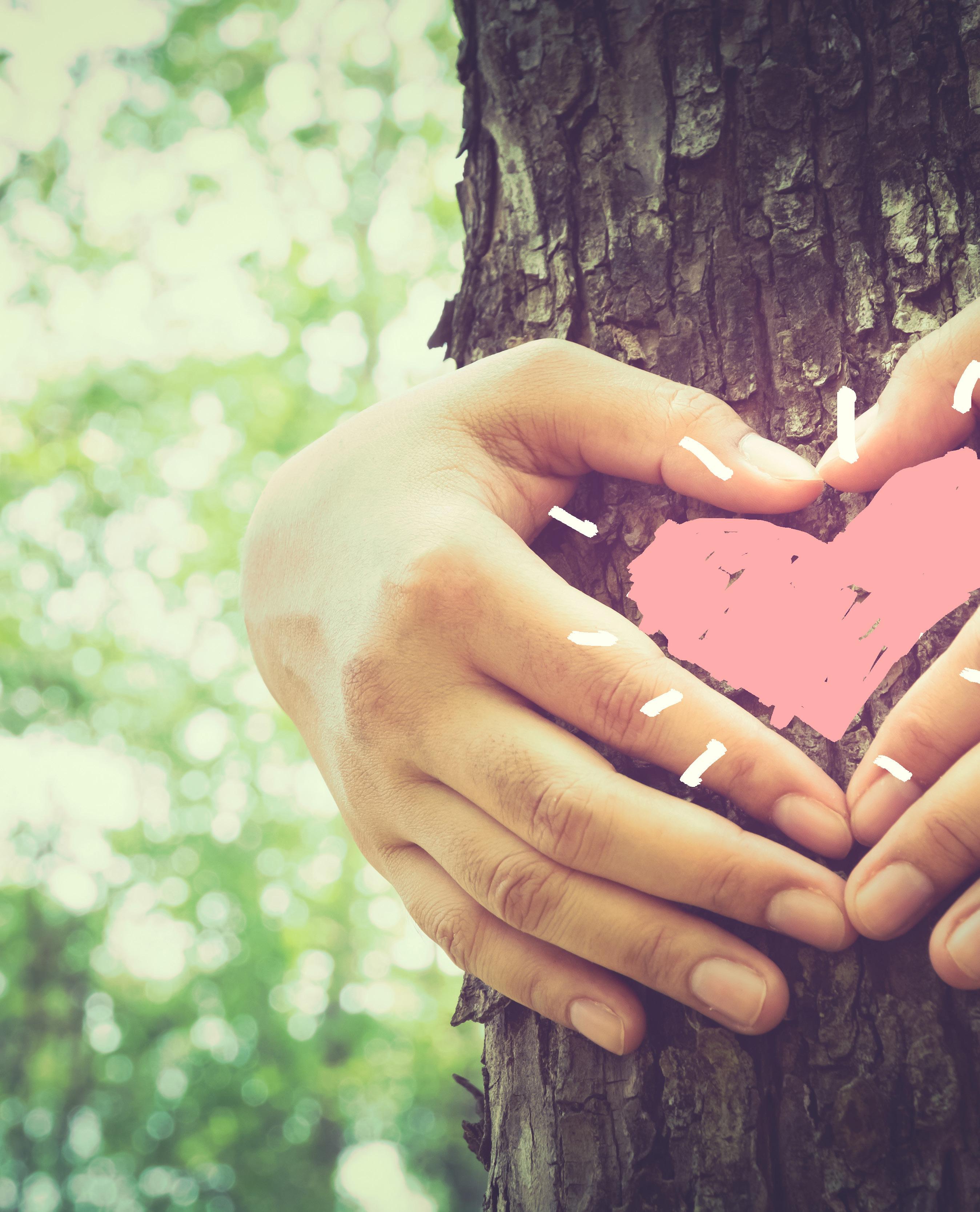
Scientists analyzed the questionnaires of over 100,000 women and determined ladies who resided in areas with the most vegetation had an overall 12 percent lower mortality rate than those who lived in barren areas. The main factors of reduced mortality rates in vegetated areas include cleaner air, more social interaction, more people engaging in physical activity and better mental health in individuals. So step outside and be thankful for the greenery all around—it might just save your life.

If you’re a woman, you might want to go outside and snuggle up to a tree or two—or at least make sure there are a few that grow where you live.
Gone are the days of wearing plainold, store-bought costume jewelry. Today, the trend is to personalize it. And the best part? It’s totally a ordable. Read on to find out some of our favorites that you’re sure to love, too.
This one’s a classic— but with a twist. Sure, you could order a typical family ring with everyone’s birthstone on it. Or, you could order a pendant charm or necklace that’s just as unique as your family. We love Etsy (etsy.com) for any and all personalized or handmade items. Our favorites include the family tree jewelry and charm bracelets.
Now you can take Grandma’s, Mom’s or Dad’s signature or special message of love and have it turned into a keepsake piece of jewelry. Still have the first time your child wrote his or her name? That will work, too! You can check out Etsy for a great variety of options, including engraved bracelets and necklace charms or a pendant composed of the writing itself. Now that’s cool!

Hey, guess what? A quick Etsy search will yield hundreds of examples of handstamped jewelry for your choosing. From inspirational sayings to your children’s birthdates, just about anything can be stamped onto jewelry. Even the guys can get in on the act with fancy-shmancy cufflinks and tie clips. Some popular choices include your kid’s or significant other’s name(s), favorite psalms or nursery rhyme lines. I love you to the moon and back sound familiar? Add birthstones or other bling to jazz it up a bit.
A fan favorite, Origami Owl features “living lockets” in the form of necklaces, bracelets and even watches. With a variety of size options available, the charms, stamped plates and stones are fully customizable. Seriously, the options are endless.
Occupations, hobbies, sports, causes—you name it, there’s a charm for it. Some of our favorites include the new MLB series and the funky summer charms, including fun shapes like fruity drinks, bathing suits, palm trees, watermelon and more. Check out the cute emoji charms as well. The charms are inexpensive, making it easy to change them out according to your mood (or the season). All lockets can be purchased at origamiowl.com, and if you need help crafting the perfect piece, you can locate a designer at origamiowl.com/designsearch.

If you’re a sentimental soul, you’re going to want to start saving your pennies.













Free
Available for iOS, Windows, Android
One of the largestgrowing storage apps on the market, this tool is the go-to for storing precious photos, documents, presentations and other important files. Once synced, you can be sure to never lose your files, as they are backed up on all your devices. Oh, and an added bonus: You can share and edit your files with anyone.

Are busy schedules and deadlines costing you time and throwing you into stress overload?
Here are a few apps that have been formulated to set reminders, save documents and ease you into a stress-free bliss. OK, we might be exaggerating a bit, but seriously, these are some cool apps. Check ‘em out!

Free
Available for iOS and Android
Short for “if this, then that,” this productivity app is an ingenious way of connecting your favorite apps together. If, for example, you join your Instagram to your Gmail, any picture you post will automatically be sent to your email. With so many collaborations available to suit your needs, it’s the newest fast and easy way to save and share social media files.


Free
Android, iOS and desktop
This all-in-one productivity booster keeps all your calendars, lists and presentations in one place. You can easily create documents and collaborate with others to help GTD (get things done). And with access to your notes on any device, you never have to worry about forgetting that spreadsheet for your next budget meeting. Whew!
Free
Available for iOS and Android
Organizing your finances can be frustrating and time consuming. With the Mint app, you can access your bank accounts quickly and create custom budgets to help you save and be successful. Notifications are also sent to your device for any unusual spending, keeping you worry-free and your bank accounts full.

Free
Available for all platforms
Do you have a strong desire to get things done on time? Wunderlist enables you to create todo lists and set due dates and reminders for yourself so everything is done on time. You can also manage your lists with friends and colleagues with just a click of a button. Making a list and checking it twice has never been easier.








Chase your dream vacation. The Chase Sapphire Preferred Card offers one of the best rewards in terms of travel points. From your signup date, you can earn 50,000 points if you spend $4,000 on purchases in the first three months. That’s equivalent to $625 toward your next flight or hotel stay. Can you say hello, piña coladas? And, as an added bonus, you earn double the points on any dining and travel expenses.
AdVenture is out there! This may seem like a simple travel card, but the Capital One Venture card is heavy in rewards. This card is perfect for those with an appetite for exploration. With every dollar you spend you earn two miles points, which can be redeemed at any time for travel rewards.
Discover the world. This new travel card from Discover offers 1.5 mile points for every dollar spent on purchases. And at the end of your first year, they’ll match the points you’ve earned! That’s equivalent to three times the miles on all purchases. For those of us who can’t take time off to travel, no worries mate! You can redeem your miles for some cha-ching, too! And there’s nothing better than money in your pocket, right?
Bank Americard the beautiful. The Bank Americard Travel Rewards credit card is a great option if you’re trying to rack up mile points. Like the Discover card, you earn 1.5 points on every dollar spent. One difference, however, is that there isn’t an expiration date for when you can use the points you earn. In other words, go ahead and start saving for that summer beach trip with the kiddos. Another plus to this card? There are no blackout dates or restrictions, and if you’re already a Bank of America customer, you earn an extra 10 percent in points on every purchase.
The following are some of our top contenders for credit cards that o er the best bang for your buck, whether you’re traveling abroad or to the grocery store.

FREEEDOOOOM! Did you read that in Mel Gibson’s voice? Good, because Chase’s Freedom Rewards card is ranked as the best cash back credit card from thesimpledollar.com, as it o ers 5 percent cash back. There’s also quarterly cash back opportunities, so you can earn rewards all year long. And with zero percent APR for 15 months and no annual fees, there’s endless possibilities for you to save without putting your pocketbook on the chopping block.
ALL ABOARD THE AMERICAN EXPRESS. If you’re looking for a card that will provide the most perks, the Premier Rewards Gold Card from American Express provides users with 25,000 membership rewards points if you spend $2,000 on purchases in the first three months. This card is ideal for everyday purchases like gas and groceries (double the points) and also for frequent travelers. The great thing about these rewards is that they can be redeemed for hotel stays, airfare, statement credit and merchandise. Next stop: savings station!
Credit cards. They may seem scary and have the potential to cause a lot of financial strife, but when chosen (and used) carefully, they can also reap many rewards for you and your bank account.

We know why our audience listens to our stations…because they LOVE THE MUSIC! So we avoid DJ chatter and deliver the greatest Top 40 and Classic hits of all time, along with important information like news, sports and weather. As a result, our listeners listen longer!
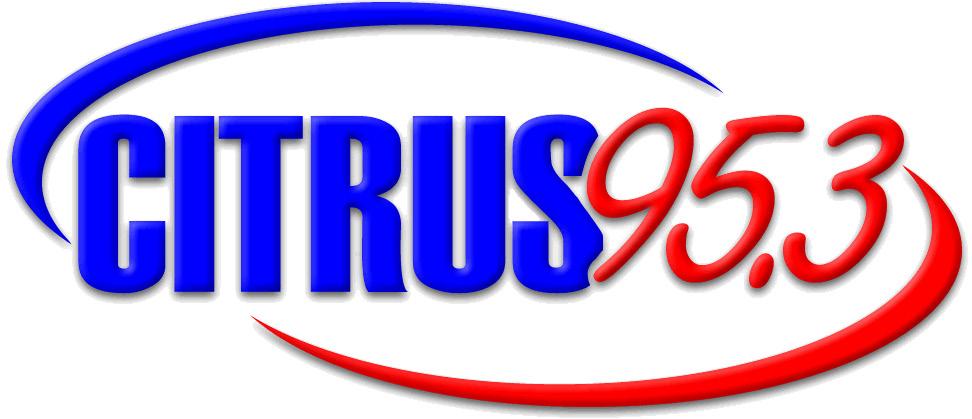

The Nature Coast’s #1 hit music station
Classic Hits
Classic Hits



